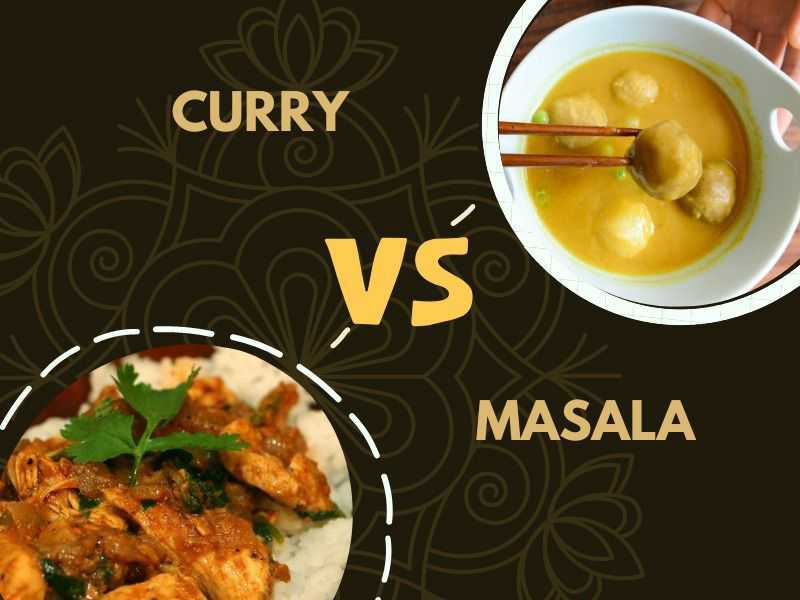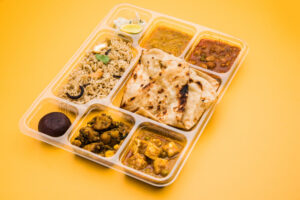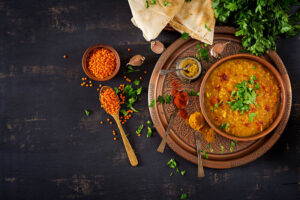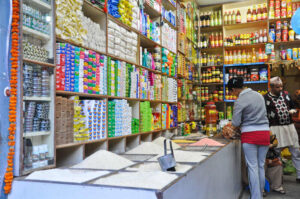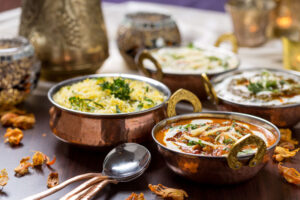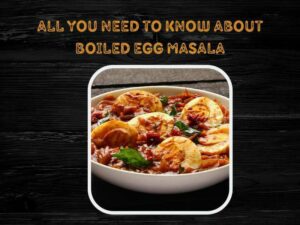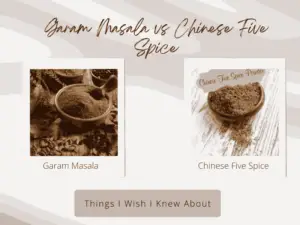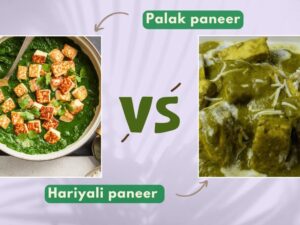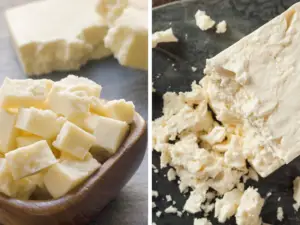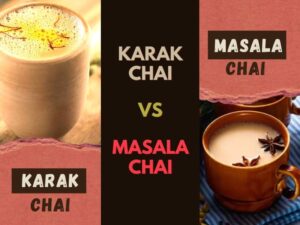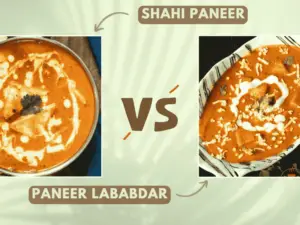Curry and masala are two of the most popular words when we’re talking about Indian food. So what is the difference between the two, and what is the meaning of each?
Curry vs Masala; here’s everything you need to know!
Does Masala Mean Curry?
Masala does not mean curry. In fact, they are not similar at all. When you see the word ‘masala’ on an Indian restaurant menu, this refers to the blend of spices used in that particular dish.
Masala means ‘mix of spices’ – chef is cooking up some special ones today: chicken masala, lamb tikka masala or green pea cauliflower #spiceyourlife #fresh pic.twitter.com/073GDnn9GY
— Curry Jacks (@curryjackscaf) May 31, 2018
What Is The Difference Between Masala And Curry?
Let’s find out the difference between curry and masala. As described above, masala is a particular mixture of spices used in a dish. For example, a chicken tikka masala or a paneer masala will both use the same spice mix in the recipe.
Curry is the entire dish of meat or fish, vegetables, and spices. So, for example, a chicken tikka masala is a curry, and the masala is the blend of spices used in that particular dish. Does that make sense? We thought so!
So what other differences are there between masala and curry? Let’s take a look.
Taste
Although you wouldn’t necessarily consume masala on its own, we’re going to talk about the taste of each.
The taste of a curry will depend on what ingredients are in the recipe. A chicken curry with chilies and peppers is going to taste different from a potato curry with coconut milk and cashew nuts.
However, now that we know masala is a spice mix, we can all agree that it’s going to taste, well, spicy!
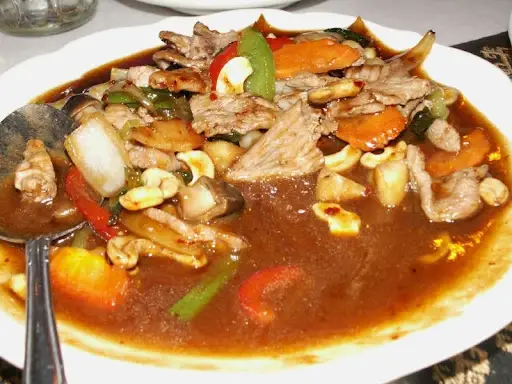
Ingredients
There are roughly 40 spices that are the most commonly used around the world. So it’s no wonder that there are also different types of masala, each made up of a different spice blend. Let’s take a look at some of the spices that may be included in a masala.
- Cumin seeds
- Bay leaves
- Cinnamon
- Black cardamom
- Cloves
- Turmeric
- Black pepper
- Coriander seeds
It’s hard to go wrong with a curry as all you have to do is throw vegetables, meat (or fish), and some spices into a pot, and voila, you have a meal! Curry is the perfect dish to make if you’ve never seen a kitchen and you have an impending dinner party. You can thank us later.
Color
When it comes to curry, the finished product can have a variety of colors. Tomato based curries will often be red or orange, whereas those with added coconut milk may have a lighter, more yellow color. A chicken curry kerala, for example, is yellow or orange in color, which is purely down to the addition of spices such as turmeric.
Masala, on the other hand, is usually red or brown in color as the majority of spices are generally red, orange, or brown.
Curry vs Masala: The History
Garam masala is one of the most popular spice blends used in Indian cooking, so we will take a look at this particular masala.
This well-loved blend of spices derives from Northern India and literally translates to ‘hot spice’. It is clear to see why it is so popular as using it in cooking would have been a way to keep warm.
Since its creation, garam masala and its good name was brought to different areas of the globe and is now loved and enjoyed by many.
It is thought that curries were first recognized in the 15th century when India was under Portuguese rule. However, it wasn’t until the 18th century that the Indian dishes were adapted to suit the demands of the British people living in India at the time.
When the British visited other parts of the world, they often took curries with them, sharing them with friends and family when they returned home.
Indian workers often accompanied the British on trips around the world and had to make do with local ingredients to try and create an authentic Indian dish. This led to a cooking fusion of cultures which ultimately led to a new range of exotic dishes.
Chana Masala Recipe
Ingredients
- 2 tsp cooking oil or ghee
- 1 tsp cumin seeds
- 1 medium onion, finely chopped
- 4 garlic cloves (minced)
- 1 inch fresh ginger (grated)
- 1 green chili pepper
- 2 tsp paprika powder
- 1 tsp cumin powder
- 1 tsp coriander powder
- 1/2 tsp turmeric powder
- 1 tsp red chili powder
- 400g fresh tomatoes
- 2 cans chickpeas
- 1 tsp salt
- Splash of cream (optional)
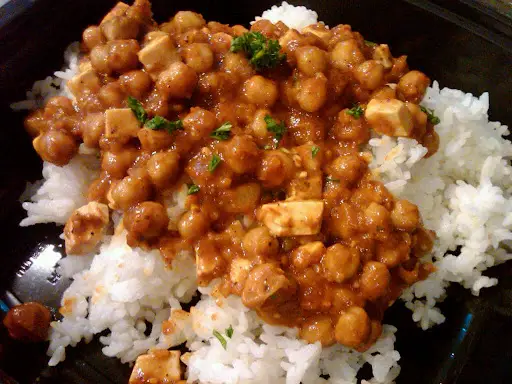
Method
Heat the cooking oil, or ghee, in a pan over medium heat.
Add the onion and cumin seeds, and saute for 5 minutes or until golden.
Next, add the ginger, garlic, and chopped green chili pepper. Saute for a further 2-3 minutes.
Add in the rest of the dried spices and stir for 1-2 minutes before adding the tomatoes.
Allow the mixture to cook for 3-4 minutes before adding the chickpeas and salt.
If you find the mixture is becoming too dry, add a cup or two of water and cook until it is of your preferred consistency.
To finish, add a splash of fresh double cream (optional) and serve immediately with a side dish of your choice.
Watch this video to see more homemade masala recipes.
Curry vs Masala: Which One is Better?
So looking at everything we have discussed, it is now time to decide which one, between curry vs masala, is better. The answer is that this is a purely personal preference.
It’s really hard to go wrong with a curry as they are so simple to make and are always delicious. There isn’t much science behind the process, you just have to make sure everything is cooked through, and that’s pretty much it!
Not only are curries perfect for using leftover veggies, but they are also ideal for meal prepping as you can batch cook and freeze portions to be eaten throughout the week.
The masala blend is what makes the curry, and without it, the dish would be bland and tasteless. Therefore, it seems you can’t have one without the other, as both elements are equally as important.
Preserving a Curry
It is important to follow the correct preservation methods when storing cooked food. Failing to do so can lead to a risk of food poisoning.
The best way to preserve a curry is to spoon leftovers into an airtight container. You can store curry in a refrigerator for up to 3 days, or you can also place it in the freezer to be eaten at a later date. Frozen items should be consumed within 3 months, so it is always a good idea to note the date on the container before freezing.
What’s the Difference Between Curry Powder and Garam Masala?
Garam masala is much more pungent than curry powder, and it is also sweeter. Curry powder is quite mild and is not an ingredient used in traditional Indian cooking. It was originally invented by the British to mimic the taste of authentic Indian cuisine.
Follow this link to see the difference between madras curry powder vs garam masala
Does Masala taste like Curry?
If you are referring to curry powder, then it is true to say that each blend contains some of the same spices, such as coriander seeds, cumin, etc. This creates a similar taste between the two. The only major difference is that masala is generally spicier, with curry powder being a mild blend.
Can I use Curry instead of Masala?
You can use curry powder instead of garam masala if needed. The only downside is that the dish you have cooked may not be as spicy as desired, but this can be rectified with the addition of chopped chilies, which will give it some heat.
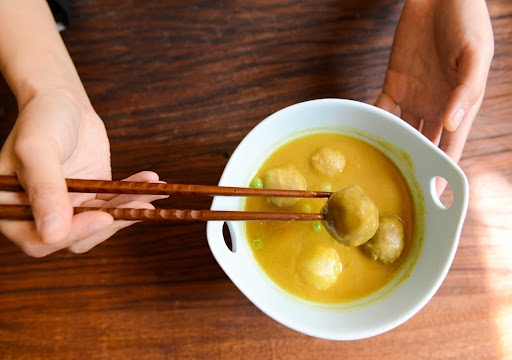
Is Curry and Tikka Masala the Same thing?
While comparing masala vs curry, it is fair to say that a tikka masala dish is a curry as it contains vegetables, meat, and a blend of spices.
How Many Different Types of Masala Are There?
There are many different types and brands of masala blends, such as:
- Tandoori masala
- Chana masala
- Biryani Masala
- Coriander Masala
It is hard to put a number on exactly how many there are as there are so many unique combinations. You could even try to come up with one of your own!
To find out what the best shahi paneer masala brand is, click here.
